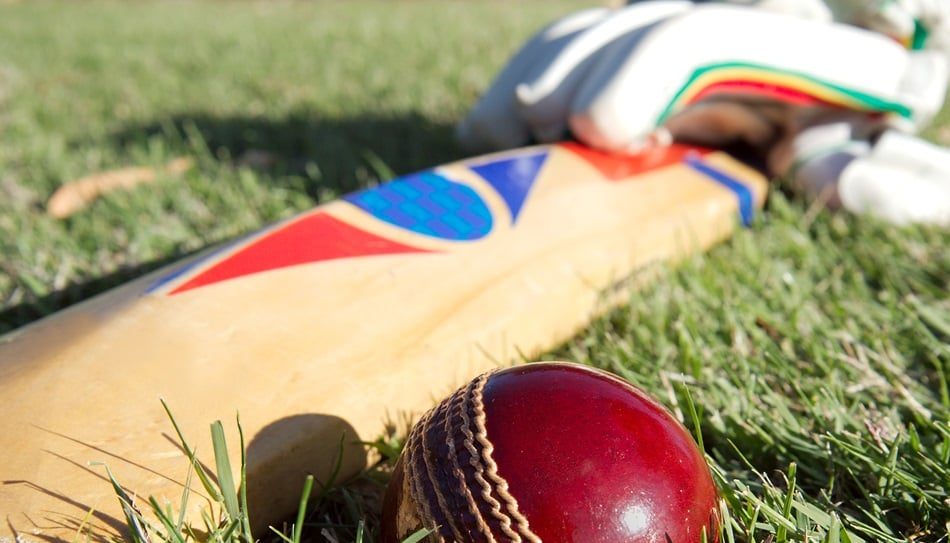Tradition and change are integral to cricket as a sport.
This is especially true with player safety. The safeguarding of batsmen and fielders has been made possible by improvements in protective gear.
Such growing knowledge can also be another reason for people who bet on cricket to appreciate how far the sport has come over time.
Evolutionary Development of Cricket Protection
From its humble beginnings, cricket protective gear has come a long way. At first, players used basic leather and cotton pads and gloves, which offered little protection.
However, as the game became faster and more competitive, there was a need for better safety gear.
Modern technology has transformed cricket equipment by introducing advanced materials and designs into their making.
Reinforced grill helmets, tough but lightweight pads, and high-impact gloves are standard now. All this not only ensures increased levels of security but also gives greater flexibility owing to comfort in playing, hence boosting performance.
Current Batting Gear Technologies
The modern batting gear is filled with state-of-the-art technologies of protection and performance maximisation. They include:
- Helmets with impact sensors: These helmets have the ability to detect and measure the intensity of impact made during a collision, thereby providing essential information towards preventing injuries.
- Kevlar-reinforced pads: Light in weight but strong enough to offer maximum protection, these are the pads which have been designed using Kevlar.
- Gel-injected gloves: Gloves that contain gel inserts help absorb shock waves, thus lowering the chances of any injury occurring on the hands while playing.
- Moisture-wicking fabrics: During long matches, advanced fabrics keep players cool by wicking away sweat from their bodies so they remain dry throughout.
These are just a few examples among many other safety measures taken up by cricket to ensure better welfare for players, besides their continuous improvement towards better performance.
Innovations in Fielder Safety
For handling the problem of fielders’ safety in cricket, technology has significantly improved. In order to provide maximum protection and still have comfort, modern protective gear is designed.
The significance of these innovations cannot be overstated as they help reduce injuries and enhance players’ confidence when on the field.
Enhanced Helmets and Face Guards
Fielders, especially those stationed near the batsman, need enhanced helmets and faceguards.
Modern helmets come with advanced materials such as carbon fibre and Kevlar which add toughness without adding weight. Such materials help in absorbing and spreading impact, hence reducing serious head injuries.
Faceguards are also becoming better since they offer good visibility and more protection.
The new designs ensure that they fit properly within the guard, thus minimising any movement upon impact.
This better fit, together with high-quality material, ensures that they can concentrate while being safe at the same time.
Protective Wear for Body Impact
It is amazing how far protective clothing for fielders has come.
The focus was always on minimising the effect of fast-moving balls hitting them.
Elastic garments like shirts or pants that have protection sewn into them work by absorbing shocks, thus reducing the likelihood of getting a fracture or a bruise.
These items are made with lightweight materials that allow air to flow through them so players don’t get uncomfortable during games that last all day long.
Nowadays people use advanced materials such as impact-resistant polymers when making protective equipment.
The reason behind this is because they are capable of absorbing greater amounts of energy from impacts, spreading it out over bigger surfaces.
This invention proves to be very useful, especially for outfield players who often find themselves in dangerous positions where hard hits could be expected at any time. It enables them to play fearlessly, even under risky circumstances.
Impact of New Materials
The use of advanced materials has completely transformed cricket protective gear, making it much safer and more effective for players.
These advancements involve the following substances:
- Kevlar: Helmets and pads made from this material offer greater resistance to impacts because they are tough and long-lasting.
- Carbon fibre: This substance is light in weight but has great strength, therefore it can be used in constructing helmets that guard against fast-moving objects.
- Impact-resistant polymers: Gloves and pads made with these materials are able to absorb shock, reducing the risk of injury through dispersion.
- Gel inserts: Comfort during play is improved by these inserts, which provide extra padding in gloves or pads, thus increasing safety.
These inventions have ensured that cricket equipment not only protects players well but also allows them to remain agile on the field while performing at their best.
Future Trends for Protective Gear
The future of cricket protective wear will be more advanced and feature the latest technologies. In one possible development, smart technology could be integrated into the equipment.
Sensors might be included in smart helmets and pads which would monitor the force of an impact, then relay instant feedback to players and coaches, helping them develop better strategies against injuries.
Another trend that is expected to take place involves materials science being used to create lighter but still strong protective gear.
Nanotechnology and advanced polymer research promise more robustness without compromising weight or flexibility in equipment design.
These improvements will keep pushing up player safety standards within cricket as well as performance levels.
Final Words
Progress made on cricket protective gear illustrates how important technology is when it comes to ensuring player safety.
These innovations range from advanced materials such as Kevlar or carbon fibre to smarter options like sensors embedded in kits, all aimed at enabling athletes to perform their best while staying out of harm’s way.
The sport will always evolve, and so too shall its safeguards, making it safer for everyone involved with each passing day.




